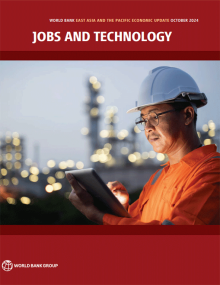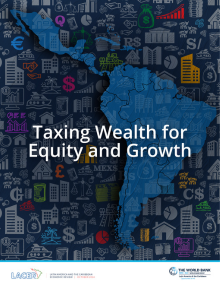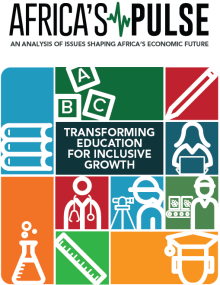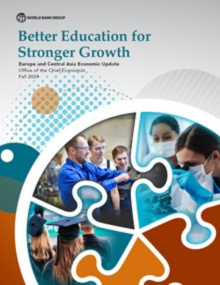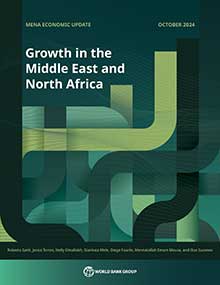East Asia and Pacific
East Asia and the Pacific (EAP), seen in the contaffecting jobs and wages in EAP? How can the region harness the potential of these technologies to improve productivity and incomes while ameliorating the disruptions for workers? These are some of the key questions that are examined in the October ext of the world economy, stands out as a paragon of development. Regional growth is at stably high rates and the benefits are widely shared. But the region also faces challenges. How are global tensions shaping trade and investment? How will increasing global uncertainty and slowing growth in China impact the region's economic growth? How are new technologies like robots, AI and digital platforms 2024 East Asia and Pacific Economic Update.
Press Release: English | Bahasa Indonesia | Chinese | Japanese | Khmer | Mongolian | Vietnamese
Learn More: Report | Overview
South Asia
Growth in South Asia is expected to exceed earlier projections this year and keep the region on track to be the fastest growing in the world. This broad-based upturn in the region is supported by strong domestic demand in India and faster recoveries in most other South Asian countries. But the region could do more to realize its full economic potential. Key policy reforms to integrate more women into the workforce and remove barriers to global investment and trade can accelerate growth. Female labor force participation in South Asia is among the lowest in the world. Raising female labor force participation rates in the region to those of men would increase regional GDP by up to 51 percent.
Press Release: English
Learn more: Report | Overview | Blog | World Bank Live event
Latin America and the Caribbean
The report estimates that the regional gross domestic product will grow by 1.9 percent in 2024, slightly exceeding previous estimates. Estimate for 2025 stands at 2.6 percent, back at the low pre-pandemic levels insufficient for significant poverty reduction.
To accelerate growth, the region must seize the current momentum. The U.S. Federal Reserve’s decision to lower interest rates is expected to provide some relief. Inflation control is another positive development, thanks to the region’s effective macroeconomic management. Brazil and Peru are on track to meet their inflation targets in 2024, with other major economies expected to follow soon after. The report also highlights that both public and private investments in Latin America and the Caribbean remain low, and the region is not fully capitalizing on nearshoring opportunities.
The report also takes a deeper dive into wealth taxes to generate fiscal space, equalize incomes, and stimulate growth. The benefits will not be automatic, however. Investments need to be made in administrative capacity, and proper valuation is necessary to ensure progressivity.
Press Release: English | Español | Français | Português
Learn More: Report | Publication site (English | Español) | Video (English | Español)
Africa
Sub-Saharan Africa's growth recovery has resumed but remains low. Economic activity in the region is projected to grow by 3 percent in 2024, after bottoming out at 2.4 percent in 2023. Private consumption and investment contributions have supported the growth recovery in 2024. Growth is expected to accelerate further to 4 percent in 2025-26. However, the outlook remains uncertain despite falling global inflation and resilient global activity supporting growth in the region. Sub-Saharan Africa needs to further accelerate growth to reduce extreme poverty and enhance prosperity. GDP per capita is projected to grow by 0.5 percent in 2024 and 1.4 percent in 2025, but this expected increase would still leave the region's living standards below their level in 2014.
Macroeconomic stability and human capital investments are vital to achieve inclusive growth for the region. Efforts should focus on equipping children with basic skills and providing youth with higher-order skills that are relevant in a fast evolving labor market. Increasing investment in education, cost-efficient spending, and collaboration with local partners will be needed to achieve universal education by 2030. Addressing these challenges will require a strong policy response to bridge the spending gap and meet education goals.
Press Release: English | Français
Learn More: PDF in OKR (English | Français) | Publication Overview (English | Français) | WB Live event (English | Français)
Europe and Central Asia
Growth in the developing economies of Europe and Central Asia is likely to moderate from 3.5 percent in 2023 to 3.3 percent this year—significantly weaker than the 4.1 percent average growth in 2000-2019. Growth this year is driven by expansionary fiscal policies and strong private consumption. External demand is less favorable because of weak economic expansion in major trading partners, like the European Union. Economic activity is likely to slow further in 2025, mostly because of the easing of expansion in the Russian Federation and Türkiye. To unleash the talent needed to reinvigorate growth and boost convergence with high-income countries, the region needs to overhaul its education systems, particularly higher education.
Press release: English | Bulgarian | Croatian | Polish | Russian | Turkish | Ukrainian
Learn more: Report | Overview | Publication Page | Blog | Event
Middle East and North Africa
According to the report, the MENA region’s overall gross domestic product (GDP) growth is expected to rise to 2.2% in 2024 – a modest increase from 1.8% in 2023 – amid heightened uncertainty in the region. In addition to examining the macroeconomic outlook of the region, this edition of the semi-annual MENA Economic Update includes a chapter on the economic impacts of the conflict on the Palestinian economy, as well as the economies of the region and beyond. The report also looked at past conflicts in the region, estimating that GDP per capita in conflict-affected countries in the region could have been on average 45% higher, measured seven years after the onset of the conflict. And while growth in the region is subdued in 2024, the report concludes by identifying levers that countries in the region could employ to accelerate economic growth.
Report: English
Press release: English | French | Arabic

